In this blog post, we will explore 17 of the most iconic African safari trees you are most likely to encounter on your African safari. From the towering Baobab to the nectar-filled canopy of the Sweet Thorn, we will look at how each tree plays a crucial role in sustaining the intricate web of life that defines the African landscape.
The African Baobab Tree (Adansonia digitata)
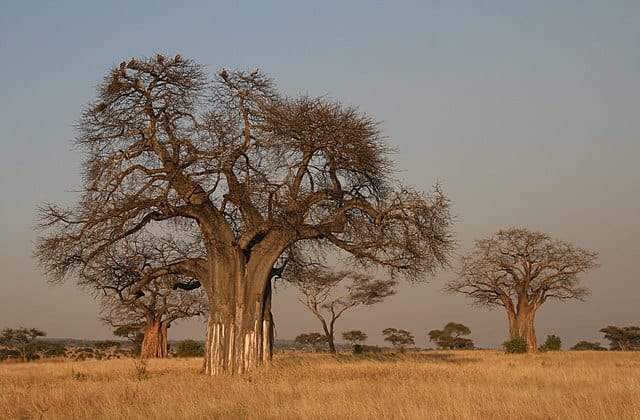
The African Baobab, often celebrated as Africa’s ‘Tree of Life,’ stands majestically as one of the most iconic trees in African safari. This large deciduous tree, with a water-storing trunk that can swell up to 9 meters in diameter, is an oasis in the African landscape.
In the dry wilderness, where water is a precious commodity, the baobab’s ability to store thousands of liters of water is life-sustaining. Its huge trunks are a unique characteristic resulting from the fusion of multiple stems and are miniature ecosystems in their own right.
These giant trees support all sorts of wildlife, from industrious bees to larger shelter-seeking African wild animals. Even straw-colored fruit bats dine on the nectar of Baobab trees, helping to reforest African woodlands.
Baobabs are essential for local biodiversity and are deeply rooted in the cultural and ecological narratives of the African continent.
On an African safari, these beautiful trees are iconic landmarks, their resilient forms embodying the spirit of life that thrives against the backdrop of the vast continent.
Acacia (Vachellia and Senegalia species)
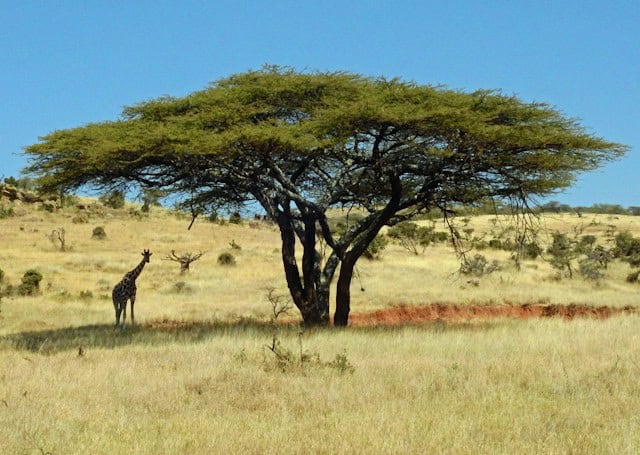
The Acacia tree (aka umbrella tree) is one of the most popular classical trees in African safari. The leaves of a majestic acacia tree act as a natural umbrella for wildlife. Its flowers are borne in spikes or cylindrical heads (sometimes singly or in long panicles) on the ends of branches.
Marabou storks tend to nest on Acacia trees because they provide comfort and safety.
These fast-growing trees have deep roots to stabilize the soil, preventing erosion and maintaining the health of the arid environments in which they thrive.
On the African savannah, the acacia is not just a tree; it’s a symbol of endurance and sustenance. Its presence is a constant across the vast landscapes of the continent, reminding us of the intricate web of life that each African safari tree supports.
Marula (Sclerocarya birrea)

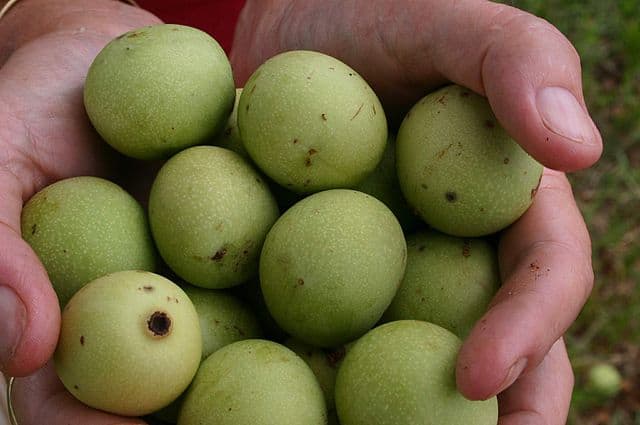
On the vibrant safari landscape, the Marula tree stands out as one of the most distinct trees in African safari. Renowned for its nutrient-rich fruit, which boasts high levels of vitamin C, the marula is a favored treat of elephants and other wildlife, playing a key role in seed dispersal.
According to National Geographic, the myth of elephants getting drunk on Marulas is false.
The marula trees have profound cultural and ecological significance. Its fruits are featured in local traditions and ceremonies, and its oil is a staple in African skincare routines.
The tree’s widespread presence across the eastern and southern regions of Africa is a testament to its adaptability and critical role in the life cycles of the continent’s ecosystems.
Sausage Tree (Kigelia africana)
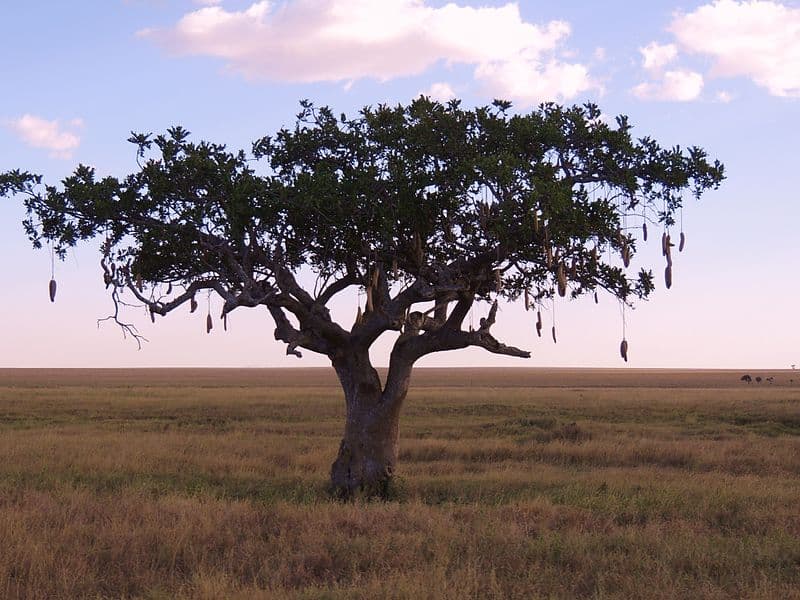

Among the many African trees, the Sausage Tree of sub-Saharan Africa is truly a sight to behold. Its name is derived from the unique, sausage-shaped fruit that dangles from its branches, creating a distinctive profile on the safari skyline.
These trees serve a multitude of purposes, from the shade provided by their broad canopies to the traditional medicine use of their peculiar fruit.
Its flowers are pollinated by nocturnal animals, playing a crucial role in the night-time ecology of the African wilderness.
The sausage tree’s curious form and function make it a favorite subject in safari photographs. Its unique features among African safari trees symbolize the continent’s rich natural heritage.
Mopane (Colophospermum mopane)

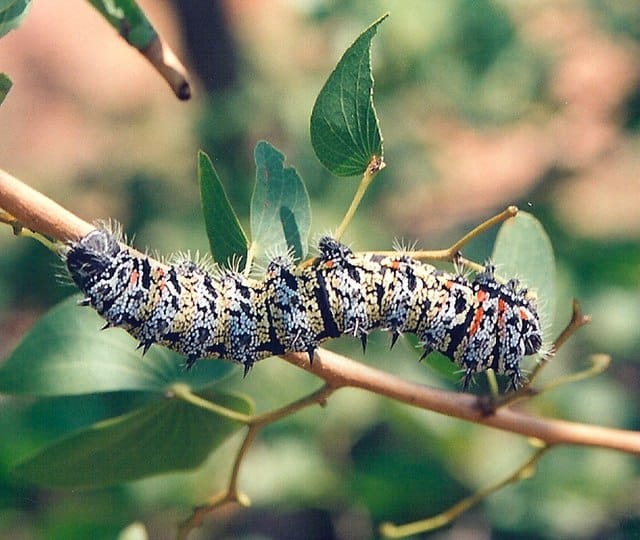
In the dynamic ecosystem of an African safari, the Mopane tree is one of the most common trees to recognize by its butterfly-shaped leaves. These trees are a vital component of the savannah, renowned for their resilience in the face of dry and challenging climates.
The Mopane is particularly noted for its symbiotic relationship with the Mopane worm, a delicacy and a significant source of protein for local communities. That is why the common name for mopane trees is the butterfly tree.
The wood of the Mopane, known for its durability, plays an important role in the daily lives of African people.
African Ebony (Diospyros mespiliformis)

The African Ebony tree, with its striking dark wood, is a distinguished member of the African safari trees. Its dense timber is a symbol of elegance and strength, highly sought after for creating exquisite artifacts that reflect the richness of the African heritage.
Beyond its aesthetic value, the ebony tree plays a crucial ecological role. The fruits of this tree are a vital food source for birds and mammals, contributing significantly to the biodiversity of the ecosystem.
For those on a safari, the sight of an African Ebony is a reminder of the enduring beauty and resilience of Africa’s natural wonders.
Recommended Reading: 👨👩👧👦 Family Safari in Kenya | Best Tours and Packages
Leadwood (Combretum imberbe)
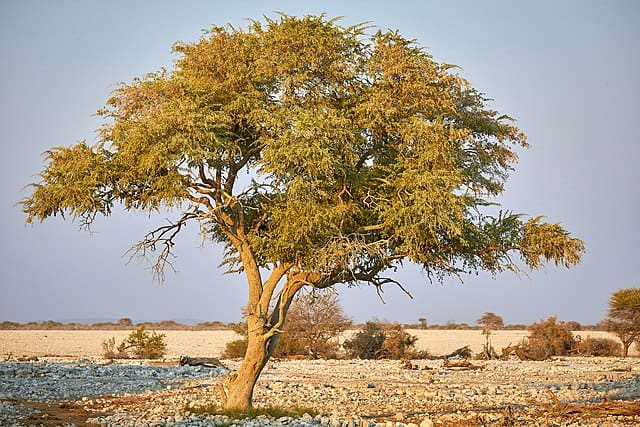
The Leadwood tree, with its incredibly hard timber, symbolizes the resilience and timelessness of African safari trees. This stoic sentinel, often outliving the very wildlife it shelters, is a favorite among safari-goers for its distinctive, enduring presence in the African bush.
Its wood is so dense that it sinks in water. However, it is invaluable in traditional medicine and also acts as a robust fuel source.
The Leadwood’s silhouette against the expansive African sky is a classic image, capturing the essence of the safari experience. Its longevity and strength are not just physical traits but also symbolize the enduring spirit of the African landscape, making the Leadwood a significant and revered part of the continent’s natural heritage.
Knobthorn (Senegalia nigrescens)
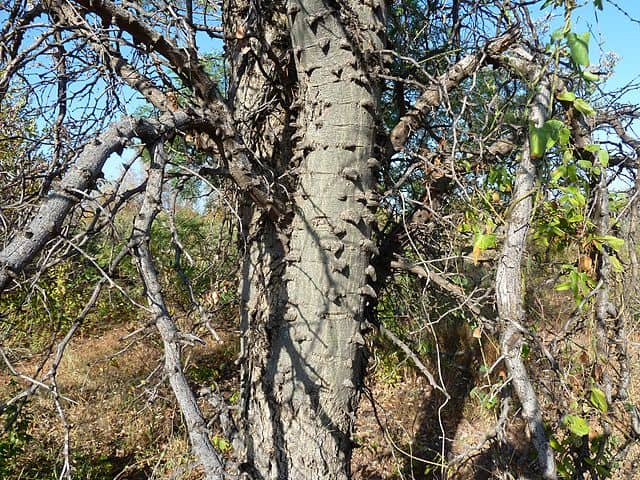
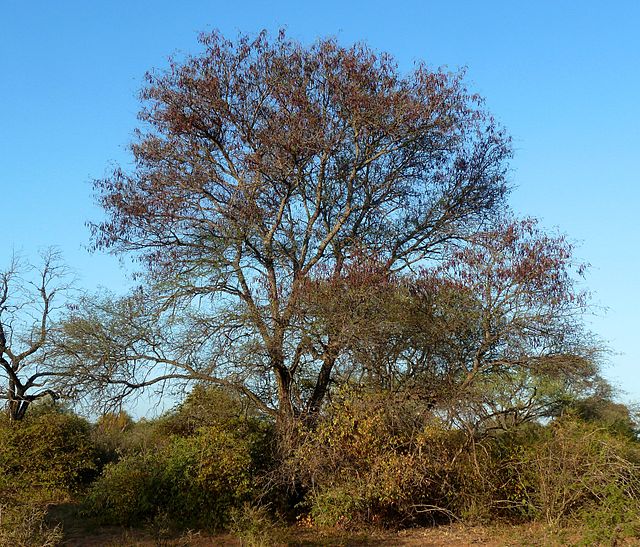
The Knobthorn tree, a prominent feature in the African savannas, especially in places like Kruger National Park (South Africa), is facing challenges due to climate change.
These large trees are known for their distinctive knobs and dark spots. They form a crucial part of the savanna ecosystem, blossoming with white flowers that signal the arrival of spring.
The Knobthorn also plays a critical role in the diet of giraffes and other herbivores.
With the current environmental changes, the habitat and survival of Knobthorn trees are at risk, making their conservation vital for maintaining the ecological integrity of African savannas.
The response of Knobthorn trees to the changing climate is contrastingly different from other species like Marula trees. This shows a receding pattern towards the core of their ranges, which could lead to a local wipeout if the suitable climates within their current ranges continue to diminish.
Umbrella Thorn Acacia (Vachellia tortilis)
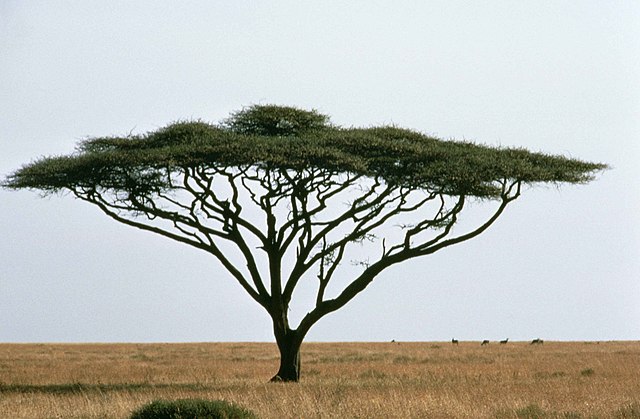
The Umbrella Thorn Acacia, a classic symbol of the African safari, is renowned for its distinct shape and resilience. This tree, a staple across the savannahs of East Africa, provides essential shade and shelter in the challenging environments it inhabits.
Its deep-rooted system contributes significantly to soil stabilization, supporting a diverse range of life.
The Umbrella Thorn’s ecological role is immense, acting as a natural shelter for wildlife and a key player in combating desertification.
Natal Mahogany (Trichilia emetica)

In the subtropical regions of Africa, the Natal Mahogany tree is a jewel among African safari trees.
Its thick, evergreen foliage provides a lush canopy, offering a cool respite from the sun. The tree’s red fruits and dense green leaves make it a visually striking feature in the African landscape.
Beyond its beauty, the Natal Mahogany has significant cultural and medicinal value. Its hardwood is used in traditional crafts, and various parts of the tree are utilized in local remedies.
Fever Tree (Vachellia xanthophloea)
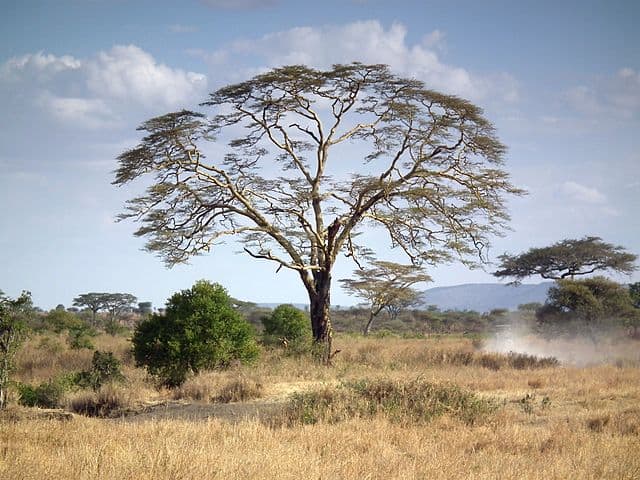
The Fever Tree, distinguishable by its yellow-green bark, stands as a unique and vital part of African safari trees.
Commonly found along watercourses, it is a natural indicator of water-rich areas.
Its name originates from early settlers’ misconception linking it to malaria, whereas it simply grew where water and, consequently, mosquitoes were abundant.
Today, the Fever Tree is appreciated not only for its striking appearance but also for its role in traditional medicine and the unique aesthetic it adds to Africa’s diverse landscapes.
Corkwood (Commiphora schimperi)
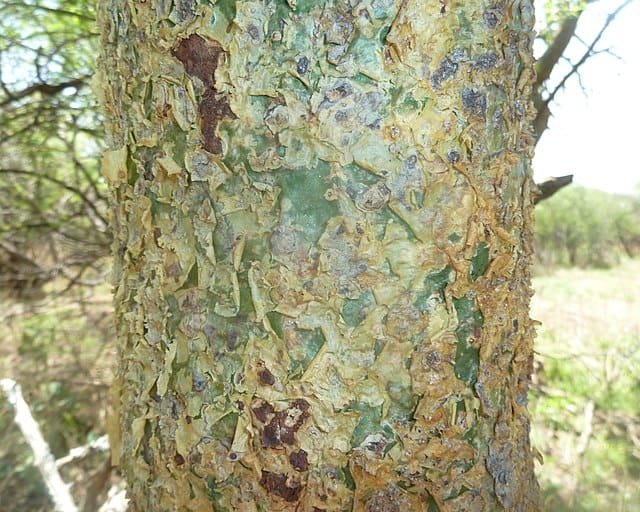
The Corkwood stands out for its medicinal properties in the diverse world of African safari trees.
These trees, spread across various regions in Africa, including Tanzania, are known for their fragrant resin and peeling bark.
They are widely used in traditional medicine for their anti-inflammatory and antimicrobial properties.
The Corkwood tree plays a vital role in the savannah, not only as a provider of healing but also as an ecological cornerstone offering shade and sustenance. Its presence is a testament to the adaptability and resilience of African safari trees, illustrating the rich natural pharmacy that the African wilderness offers.
Jackalberry (Diospyros mespiliformis)

The Jackalberry tree, a striking figure among African safari trees, is known for its dense canopy and sweet fruits that are a favorite among many animals, including its namesake, the jackal.
This large tree, found across various African landscapes, is crucial for the ecosystem, providing shade, shelter, and sustenance to a wide array of wildlife.
The Jackalberry tree is not only a provider of food but also a source of hardwood, valued for its durability and used in local crafts.
Its presence in the African safari is integral, often captured in the jungle background of wildlife images, symbolizing the richness and diversity of life supported by these magnificent trees.
The Jackalberry tree’s ecological role and cultural significance make it an essential part of the African safari experience, contributing to the overall health and balance of the continent’s natural habitats.
Green Thorn (Balanites aegyptiaca)

The Green Thorn tree thrives in arid conditions, showcasing the resilience of Africa’s flora. It has been traditionally used by locals as a natural toothbrush.
The fruit of the toothbrush trees looks like an acorn, and provides food for various animal species, making it a key player in the survival of wildlife in challenging environments.
This tree’s ability to flourish in harsh landscapes showcases how adaptable African safari trees can be.
Apple-leaf (Philenoptera violacea)
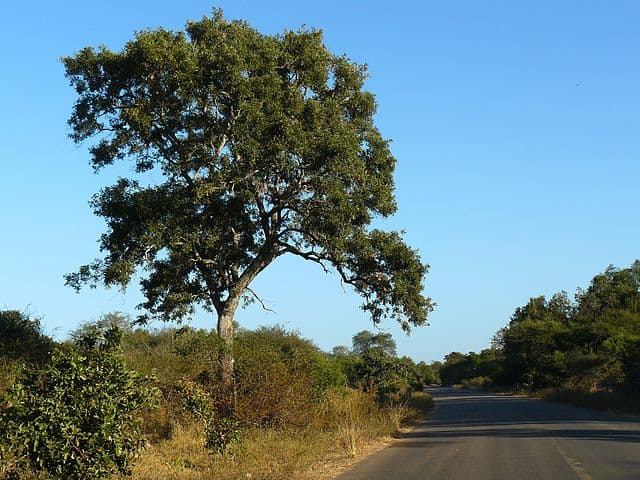
The Apple-leaf tree, also known as Philenoptera violacea, is a lesser-known yet vital contributor among African safari trees.
Its distinctive feature is the sound of its leaves, which rustle like falling rain.
This tree, often found in woodland and savannah regions, is not only valued for its soothing sound but also provides shelter and food for various wildlife.
Camel Thorn (Vachellia erioloba)
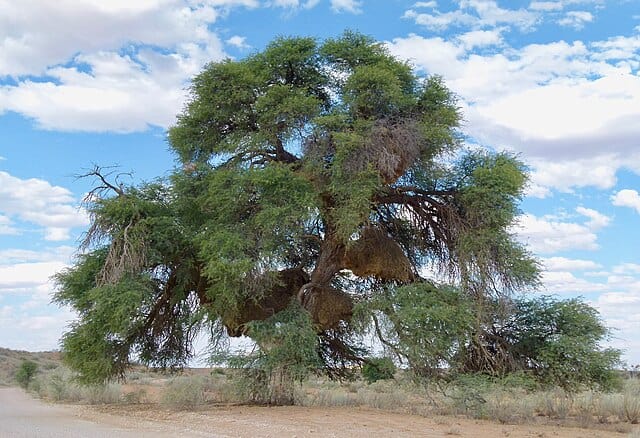
The Camel Thorn tree, whose Afrikaans name is Kameeldoring, is one of the most iconic trees of the Kalahari and a resilient member of African safari trees.
Well-adapted to the desert environment, it is recognized for its deep root system that taps into groundwater sources, enabling it to thrive for a long time in arid conditions.
This hardy tree can grow up to 18 meters high and is often a focal point of the ecosystem, providing vital nourishment for various animals through its seed pods.
The Camel Thorn’s wood is highly sought-after for making furniture and tools. Its gum has traditional medicinal uses, reflecting its deep connection with the culture and ecology of Southern Africa.
Its significant role as a food source and shelter for wildlife, alongside its cultural importance, underscores its value within the African landscape.
River Bushwillow (Combretum erythrophyllum)

The River Bushwillow, also known as Combretum erythrophyllum, is a significant species among African safari trees.
Predominantly found along riverbanks and wetlands in Southern Africa, this tree is crucial for the ecosystem, providing food and shelter for a variety of animals, including herbivores like elephants and giraffes that feed on its nutrient-rich leaves.
The River Bushwillow plays an essential role in stabilizing soil, preventing erosion, and maintaining water quality in rivers and wetlands.
Additionally, it is used for traditional medicine and holds cultural significance for many native people.
The River Bushwillow’s adaptability to different habitats, including savannas, woodlands, and forests, as well as its ability to grow in disturbed areas, highlights the resilience and diversity of African safari trees.
Sweet Thorn (Vachellia karroo)
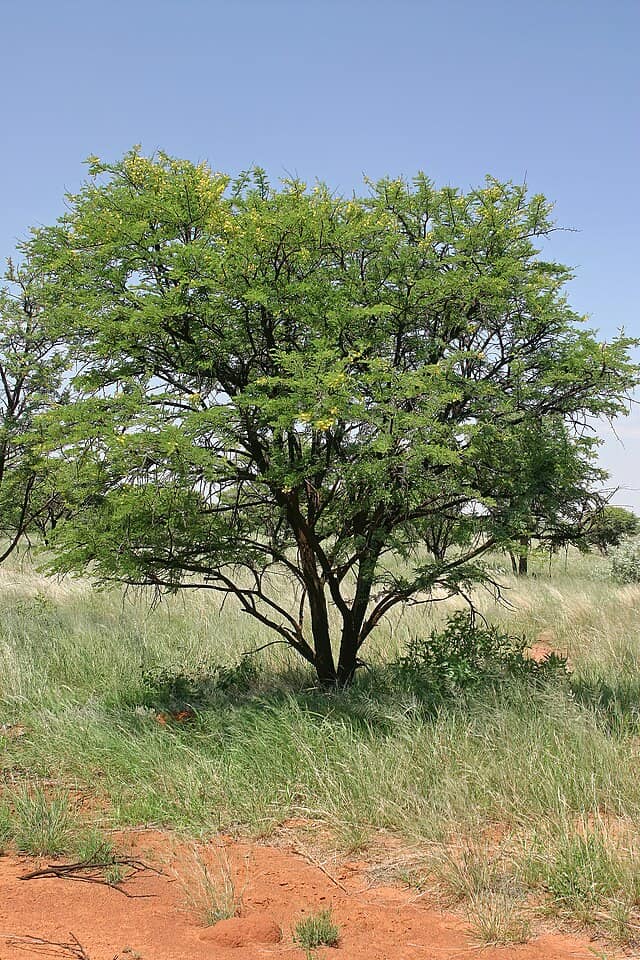
The Sweet Thorn, also known as Vachellia karroo, is a remarkable member of the African safari trees, renowned for its golden-yellow flowers and sweet fragrance.
This tree is a common sight in southern Africa, including regions like Namibia and Botswana.
Its broad, spreading crown and long, white thorns make it a distinctive feature of the African landscape.
The Sweet fragrance of the flower attracts a multitude of bees, butterflies, and other insects, making it an essential pollinator in the ecosystem.
The Sweet Thorn’s ecological significance extends beyond its beauty; it plays a crucial role in preventing soil erosion and desertification, and its nitrogen-fixing ability enhances soil fertility, supporting other plant species in the savanna.
Its cultural and economic importance is also notable, with many local communities using its branches as an alternative to Christmas trees and its thorns for traditional medicine.
“One’s destination is never a place, but a new way of seeing things.”
Henry Miller
🌳 Wrapping up African Safari Trees
The magnificent trees of the African safari, from the majestic Baobab to the resilient Acacia, are more than just natural wonders; they are vital components of a rich and diverse ecosystem that supports an array of wildlife and local communities.
These iconic trees, each with their own unique story and ecological significance, offer a glimpse into the heart of Africa’s natural beauty.
We invite you to delve deeper into the wonders of the African safari by exploring our other articles on African safaris.
❓ Frequently Asked Questions (FAQs)
What type of tree is in the safari?
On a safari, you can find a variety of trees, including the African Baobab, Acacia, Marula, Sausage Tree, Mopane, African Ebony, Leadwood, Knobthorn, Umbrella Thorn Acacia, Natal Mahogany, Fever Tree, Corkwood, Jackalberry, Green Thorn, Apple-leaf, Camel Thorn, and River Bushwillow.
What is the most common tree in Africa?
- The Acacia tree, particularly the Umbrella Thorn Acacia (Vachellia tortilis), is one of the most common and iconic trees in Africa. Its presence is widespread across the savannah landscapes of the continent.
What is the most common tree in Tanzania?
In Tanzania, the Baobab tree (Adansonia digitata) is one of the most common and iconic trees, especially in the Sahel sub-Saharan savanna. These trees are known for their massive trunks and longevity.
What are those big African trees called?
The big African trees are commonly known as Baobab trees (Adansonia digitata). They are remarkable for their enormous trunk size and are often referred to as Africa’s ‘Tree of Life.’
What are the 5 trees in Africa?
Five notable trees in Africa are:
- African Baobab (Adansonia digitata)
- Acacia (Vachellia and Senegalia species)
- Marula (Sclerocarya birrea)
- Sausage Tree (Kigelia africana)
- Mopane (Colophospermum mopane)


LOVE this article!
Thank you. Much appreciated.